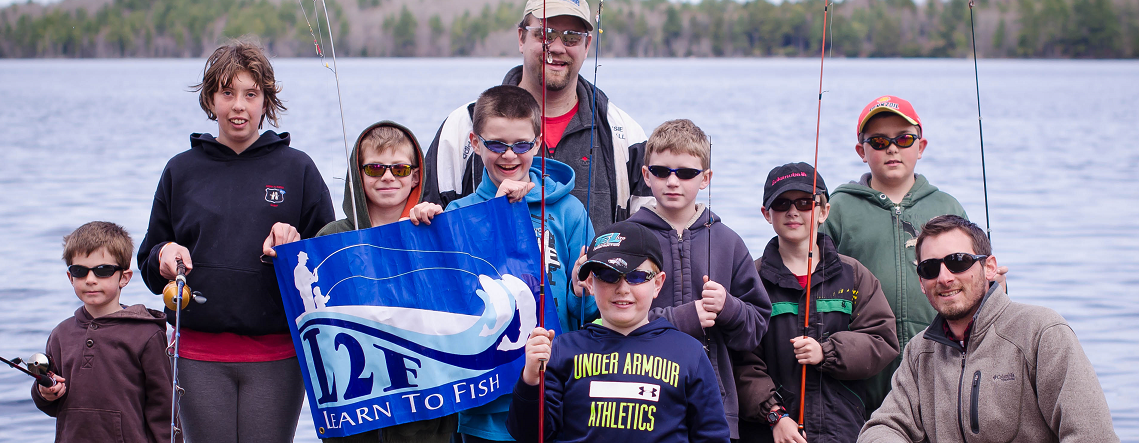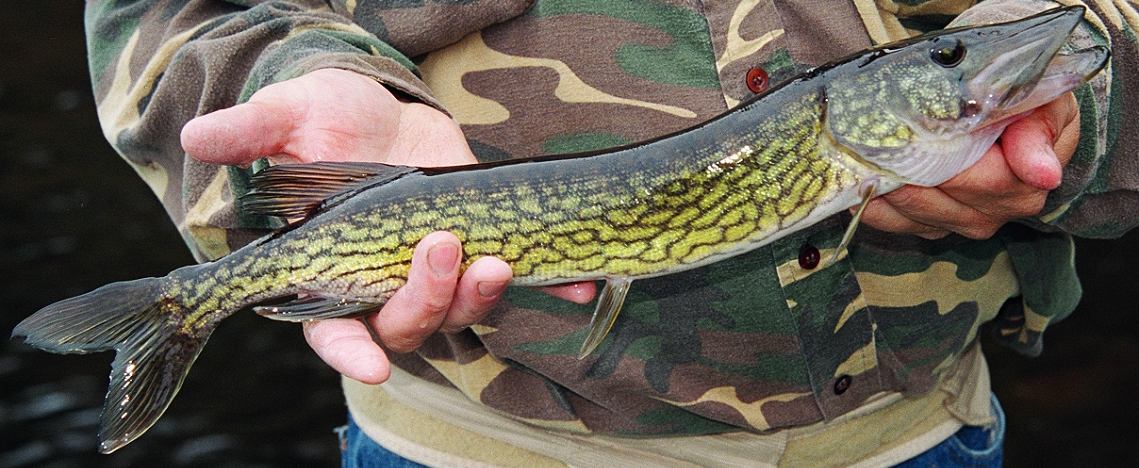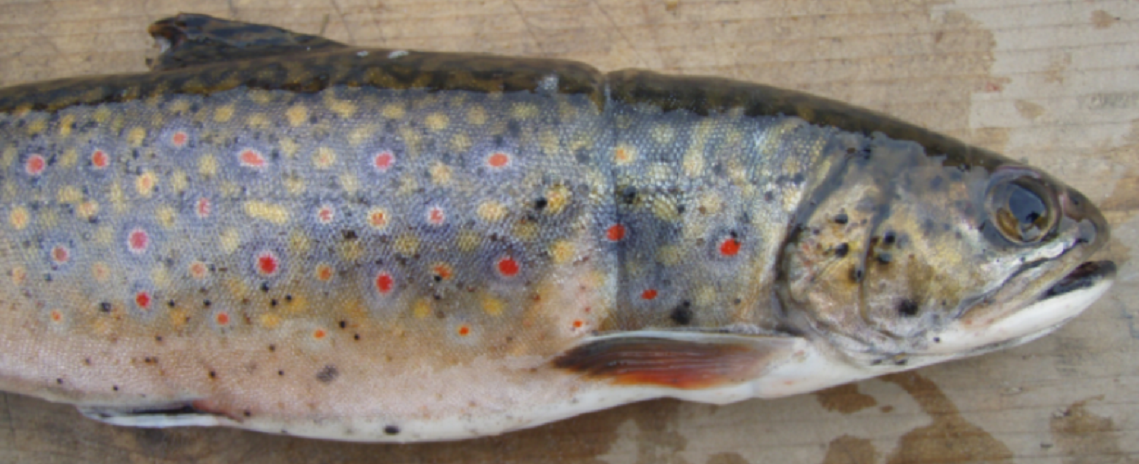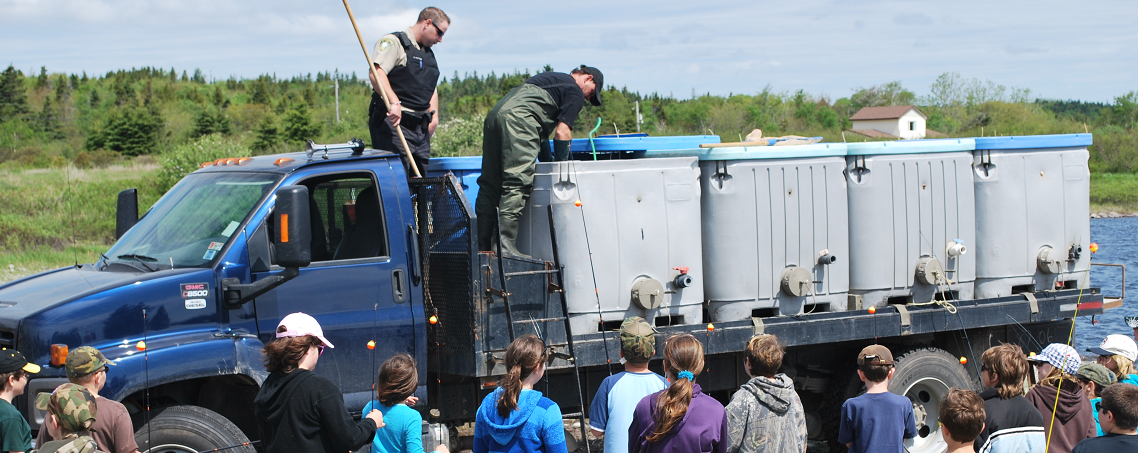Frequently Asked Questions

How do get I my children involved in sportfishing?
Sportfishing is a healthy outdoor activity that is easy to learn and generally inexpensive to get started in. One of the most successful and rewarding ways to introduce children to sportfishing is through an experienced parent, family member or friend. Alternatively, our Department's L2F (Learn to Fish) is an interactive, informative program for youth focusing on recreation and an appreciation for Nova Scotia's aquatic environment. Youth not only learn about safe fishing practices but they also learn to assemble and use a rod and reel and fishing tackle, and to identify their catch. Keeping things simple such as easy tackle, short trips, choosing fair weather days and locations with a higher probabilities of catching fish can go a long way towards ensuring sportfishing becomes a lifelong activity for your family.

Are there negative impacts from aquatic invasive species?
The intentional or accidental introduction of fish or other aquatic organisms from one lake or stream to another can negatively affect local fish populations through competition and predation and permanently alter fish communities. Preventing further illegal introductions of smallmouth bass, chain pickerel and other aquatic invasive species continues to be a high priority for our Department. Report illegal introductions to 1-800-565-2224 or sightings of introduced species by calling 902-485-5056 or email inland@novascotia.ca If possible please provide a date, location and picture.

What are the small “pepper like” black spots on the fish I caught?
Black spot parasite ![]() occurs in trout and other fish species throughout Nova Scotia. The small black spots in the skin and sometimes on the fins can be so plentiful the fish looks like it has been covered with pepper. These spots are the developing stage of the parasite Apolhallus sp. which has a complex life cycle involving snails, fish and fish-eating birds such as loons. Black sport does not normally impact the health of the fish and is not harmful to humans if eaten. Other common parasites of trout include gill maggots
occurs in trout and other fish species throughout Nova Scotia. The small black spots in the skin and sometimes on the fins can be so plentiful the fish looks like it has been covered with pepper. These spots are the developing stage of the parasite Apolhallus sp. which has a complex life cycle involving snails, fish and fish-eating birds such as loons. Black sport does not normally impact the health of the fish and is not harmful to humans if eaten. Other common parasites of trout include gill maggots ![]() and larval cestodes
and larval cestodes ![]() .
.

Which lakes are being stocked this year?
As part of our popular Hatchery Stocking Program approximately 200 lakes are stocked with either brook trout or rainbow trout each spring as part of our urban stocking program. Trout are generally catchable size and in addition to providing angling opportunity may reduce pressure on more vulnerable wild stocks. Weekly stocking updates are a great way to stay up to date on stocking and sportfishing opportunities.

Why are there size limits for trout?
Size limits for trout and other species are often used by fisheries managers to protect fish until they reach spawning size, improve the proportion of larger fish in the population and protect important spawning size fish. In Nova Scotia, Special Management Areas have been implemented for both trout and smallmouth bass with these goals in mind. In these areas size limits and gear restrictions may be in place. Consult the Anglers' Handbook ![]() for regulations specific to your Recreational Fishing Area
for regulations specific to your Recreational Fishing Area ![]() .
.

Where are the inland (freshwater) water boundaries in my area?
Inland waters refer to all waters of a river, stream or brook that are upstream of the boundary or reference point, as listed in Schedule II ![]() of the Maritime Provinces Fisheries Regulations. For example, the reference point for the St. Mary’s River in Guysborough County is the highway bridge at Sherbrooke. All waters above the bridge are inland (freshwater) and all waters below the bridge are considered tidal (salt water). If your area of interest is not listed in Schedule II, all waters that are downstream of the low-water mark at the time of low water as set out in the Canadian Tide and Current Tables are considered tidal.
of the Maritime Provinces Fisheries Regulations. For example, the reference point for the St. Mary’s River in Guysborough County is the highway bridge at Sherbrooke. All waters above the bridge are inland (freshwater) and all waters below the bridge are considered tidal (salt water). If your area of interest is not listed in Schedule II, all waters that are downstream of the low-water mark at the time of low water as set out in the Canadian Tide and Current Tables are considered tidal.
